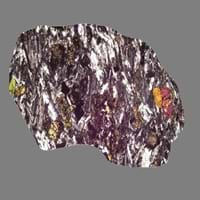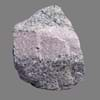Definition
Trachyte is a grey fine-grained volcanic rock which mainly consists of alkali feldspar
Oolite is a sedimentary rock formed from ooids, spherical grains which are composed of concentric layers of calcite
Discoverer
Alexandre Brongniart and René Just Haüy
Unknown
Etymology
From Greek trakhus rough’ or trakhutēs roughness
From oo- + -lite, after German Oolit. A rock consisting of fine grains of carbonate of lime
Class
Igneous Rocks
Sedimentary Rocks
Sub-Class
Durable Rock, Medium Hardness Rock
Durable Rock, Medium Hardness Rock
Other Categories
Fine Grained Rock, Opaque Rock
Fine Grained Rock, Opaque Rock
Texture
Aphanitic to Porphyritic
Clastic or Non-Clastic
Color
Black, Brown, Dark Greenish - Grey, Green, Grey, Light to Dark Grey, White
Black, Blue, Brown, Cream, Green, Grey, Pink, Red, Silver, White, Yellow
Durability
Durable
Durable
Scratch Resistant
Yes
Yes
Appearance
Banded
Rounded and Rough
Interior Uses
Decorative Aggregates, Flooring, Homes, Interior Decoration
Decorative Aggregates, Flooring, Interior Decoration
Exterior Uses
As Building Stone, As Facing Stone, Paving Stone, Garden Decoration, Office Buildings
As Building Stone, As Facing Stone, Garden Decoration, Paving Stone
Other Architectural Uses
Curbing
Not Yet Used
Construction Industry
As Dimension Stone, Building houses or walls, Cement Manufacture, Construction Aggregate, for Road Aggregate, Landscaping, Making natural cement, Manufacture of Magnesium and Dolomite Refractories
Cement Manufacture, Cobblestones, Landscaping
Medical Industry
Not Yet Used
Not Yet Used
Antiquity Uses
Artifacts, Monuments, Sculpture, Small Figurines
Artifacts
Commercial Uses
Cemetery Markers, Creating Artwork
Creating Artwork, Jewelry, Used in aquariums
Types
Not Available
Not Available
Features
Available in Lots of Colors and Patterns, Is one of the oldest rock, Matrix variable
Available in lots of colors, Generally rough to touch, Very fine grained rock
Archaeological Significance
Monuments
Used
Not Yet Used
Famous Monuments
Data Not Available
Not Applicable
Sculpture
Used
Not Yet Used
Famous Sculptures
Data Not Available
Not Applicable
Figurines
Used
Not Yet Used
Formation
Trachyte is an igneous volcanic rock with an aphanitic to porphyritic texture. It is the volcanic equivalent of syenite rock and forms as a result of magmatic differentiation.
Oolites form when layers of calcite are deposited around a sand grain or fossil piece and are rolled around in calm water, which makes them round.
Mineral Content
Augite, Biotite, Feldspar, Hornblade, Plagioclase, Quartz
Calcite, Chert, Clay, Dolomite, Quartz, Sand, Silt
Compound Content
Potassium Oxide, Sodium Oxide, Silicon Dioxide
Aluminium Oxide, Ca, NaCl, CaO, Iron(III) Oxide, FeO, MgO
Types of Metamorphism
Cataclastic Metamorphism, Contact Metamorphism, Regional Metamorphism
Not Applicable
Types of Weathering
Biological Weathering, Chemical Weathering, Mechanical Weathering
Biological Weathering, Chemical Weathering, Mechanical Weathering
Types of Erosion
Chemical Erosion, Coastal Erosion, Glacier Erosion, Sea Erosion, Water Erosion, Wind Erosion
Chemical Erosion, Coastal Erosion
Grain Size
Fine Grained
Fine Grained
Fracture
Not Available
Conchoidal
Porosity
Less Porous
Less Porous
Luster
Metallic
Pearly to Shiny
Compressive Strength
Not Available
Cleavage
Not Available
Non-Existent
Toughness
Not Available
1
Specific Gravity
2.7
Not Available
Transparency
Opaque
Opaque
Density
2.43-2.45 g/cm3
Not Available
Resistance
Heat Resistant, Impact Resistant, Wear Resistant
Heat Resistant, Wear Resistant
Deposits in Eastern Continents
Asia
China, India, Iran, Saudi Arabia, Sri Lanka, Taiwan, Thailand, Turkey, Vietnam
Brunei, India, Indonesia, Malaysia, Singapore, Thailand, Vietnam
Africa
Angola, Egypt, Madagascar, Namibia, Nigeria, South Africa
Cameroon, Chad, Ghana, Kenya, Malawi, Sudan, Tanzania, Togo, Zambia, Zimbabwe
Europe
Bulgaria, England, Germany, Norway, Romania, Switzerland
United Kingdom
Others
Not Yet Found
Not Yet Found
Deposits in Western Continents
South America
Brazil, Chile
Colombia
Deposits in Oceania Continent
Australia
New Zealand, Queensland, South Australia, Western Australia
Adelaide, New Zealand, Queensland, Tonga, Victoria, Yorke Peninsula
All about Trachyte and Oolite Properties
Know all about Trachyte and Oolite properties here. All properties of rocks are important as they define the type of rock and its application. Trachyte belongs to Igneous Rocks while Oolite belongs to Sedimentary Rocks.Texture of Trachyte is Aphanitic to Porphyritic whereas that of Oolite is Clastic or Non-Clastic. Trachyte appears Banded and Oolite appears Rounded and Rough. The luster of Trachyte is metallic while that of Oolite is pearly to shiny. Trachyte is available in black, brown, dark greenish - grey, green, grey, light to dark grey, white colors whereas Oolite is available in black, blue, brown, cream, green, grey, pink, red, silver, white, yellow colors. The commercial uses of Trachyte are cemetery markers, creating artwork and that of Oolite are creating artwork, jewelry, used in aquariums.










